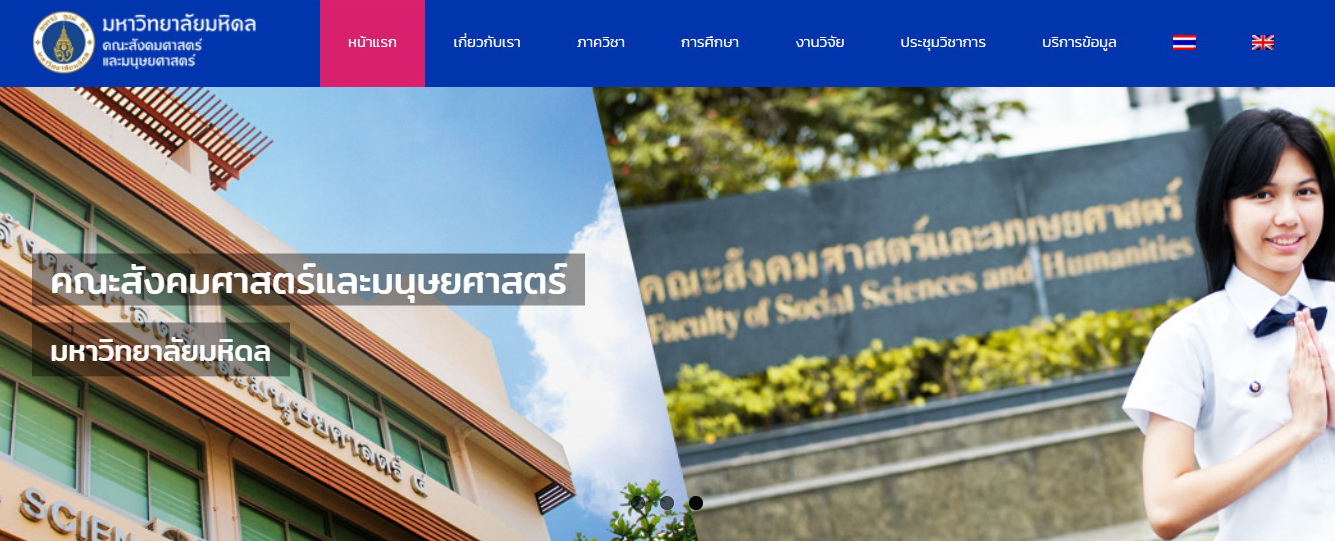การสอนทางไกลในสถานการณ์ฉุกเฉินสำหรับหลักสูตรที่ใช้ภาษาอังกฤษแบบเข้มข้นในโรงเรียนไทย
ความรู้ที่ได้จากการศึกษาครั้งนี้
คำสำคัญ:
การสอนทางไกลในสถานการณ์ฉุกเฉิน (Emergency Remote Teaching; ERT) การเรียนการสอนภาษาอังกฤษ (English Language Teaching; ELT) หลักสูตรที่ใช้ภาษาอังกฤษแบบเข้มข้น (Intensive English) ประเทศไทยบทคัดย่อ
ในช่วงไม่กี่ทศวรรษที่ผ่านมานี้ แทบไม่มีเหตุการณ์ใดที่ส่งผลกระทบไปทั่วทั้งโลกได้เท่ากับปรากฏการณ์โรคระบาด COVID-19 เหตุการณ์โรคระบาดครั้งนี้ส่งผลกระทบเป็นวงกว้างและมีหลาย ๆ กรณีที่กลายเป็นเรื่องราวใหญ่โตเกินความเป็นจริง โดยหนึ่งในนั้นก็คือ เรื่องการศึกษา การระบาดของ COVID-19 ทำให้สถานศึกษาหลายๆ แห่งจำเป็นต้องจัดการเรียนการสอนเป็นแบบออนไลน์แทบจะในทันทีทันใด ทั้งครูและนักเรียนจำเป็นต้องปรับตารางเวลาในชีวิตประจำวันของตนเองและปรับวิธีการเรียนการสอนใหม่เพื่อให้สอดคล้องกับสถานการณ์ รายงานฉบับนี้เป็นการเก็บรวบรวมข้อมูลที่เกิดขึ้นจริงในการเรียนการสอนของหลักสูตรที่ใช้ภาษาอังกฤษแบบเข้มข้นในมหาวิทยาลัยแห่งหนึ่งในประเทศไทยในช่วงที่เกิดการระบาดของ COVID-19 โดยเป็นการศึกษาวิเคราะห์ตามแนวทางการสอนทางไกลในสถานการณ์ฉุกเฉินหรือ Emergency Remote Teaching (ERT) รายงานฉบับนี้ถือเป็นการแบ่งปันความรู้ที่เกิดจากการจัดการเรียนการสอนจริง ๆ ตามหลัก ERT รายงานฉบับนี้กล่าวถึงการแบ่งเนื้อหาที่ต้องเรียนเป็นหน่วยเล็ก ๆ การประเมินแบบต่อเนื่อง การปรับการจัดการด้านความปลอดภัยในการประเมิน การสร้างชุมชนการเรียนทางออนไลน์ เนื้อหาในรายงานฉบับนี้อาจเป็นประโยชน์ต่อทั้งบุคลากรในระบบการสอนทางไกลในสถานการณ์ฉุกเฉินและนักวิชาการท่านอื่น ๆ ที่ต้องการพัฒนาวิธีการสอนของตนเอง
เอกสารอ้างอิง
Aguliera, E., & Nightengale-Lee, B. (2020). Emergency remote teaching across urban and rural contexts: perspectives on educational equity. Information and Learning Sciences. 471–478.
Alayafi, E.G. & Gunduz, P. (2017). An essential tool for continuous assessment: The learning portfolio. In R. Al-Mahrooqi R., C. Coombe, F. Al-Maamari, & V. Thakur (Eds), Revisiting EFL assessment (pp. 237–260). Springer. https://doi.org/10.1007/978-3-319-32601-6_15
Amin, F. M., & Sundari, H. (2020). EFL students’ preferences on digital platforms during emergency remote teaching: Video Conference, LMS, or Messenger Application?. Studies in English Language and Education, 7(2), 362–378.
Arasaratnam-Smith, L. A., & Northcote, M. (2017). Community in online higher education: Challenges and opportunities. Electronic Journal of e-Learning, 15(2), 188–198.
Baldwin, S. J., & Ching, Y. H. (2019). An online course design checklist: development and users’ perceptions. Journal of Computing in Higher Education, 31(1), 156–172.
Fask, A., Englander, F., & Wang, Z. (2014). Do online exams facilitate cheating? An experiment designed to separate possible cheating from the effect of the online test taking environment. Journal of Academic Ethics, 12(2), 101-112.
Hodges, C., Moore, S., Lockee, B., Trust, T., & Bond, A. (2020). The difference between emergency remote teaching and online learning. Educause Review, 27. https://medicine.hofstra.edu/pdf/faculty/facdev/facdev-article.pdf
Huang, M., Shi, Y., & Yang, X. (2020). Emergency remote teaching of English as a foreign language during COVID-19: Perspectives from a university in China. IJERI: International Journal of Educational Research and Innovation, (15), 400–418.
Jeffery, K. A., & Bauer, C. F. (2020). Students’ responses to emergency remote online teaching reveal critical factors for all teaching. Journal of Chemical Education, 97(9), 2472–2485.
Ladyshewsky, R. K. (2015). Post-graduate student performance in ‘supervised in-class’ vs.‘unsupervised online’ multiple choice tests: Implications for cheating and test security. Assessment and Evaluation in Higher Education, 40(7), 883–897.
Landin, J. M. (2019). Excellence in Lesson Planning: The Purpose and Use of a Micro-uniting Template. Journal of Higher Education Theory and Practice, 19(5). 91–97.
Lantz-Andersson, A., Lundin, M., & Selwyn, N. (2018). Twenty years of online teacher communities: A systematic review of formally-organized and informally-developed professional learning groups. Teaching and Teacher Education, 75, 302–315.
Major, A., & Calandrino, T. (2018). Beyond chunking: Micro-learning secrets for effective online design. FDLA Journal, 3(1), 1–5.
Mohmmed, A. O., Khidhir, B. A., Nazeer, A., & Vijayan, V. J. (2020). Emergency remote teaching during Coronavirus pandemic: the current trend and future directive at Middle East College Oman. Innovative Infrastructure Solutions, 5(3), 1–11.
Author. (2020a).
Author. (2020b).
Rahim, A. F. A. (2020). Guidelines for online assessment in emergency remote teaching during the COVID-19 pandemic. Education in Medicine Journal, 12(2). 59–68
Rudolph, M. (2017). Cognitive theory of multimedia learning. Journal of Online Higher Education, 1(2). 1–15.
Shim, T. E., & Lee, S. Y. (2020). College students’ experience of emergency remote teaching due to COVID-19. Children and youth services review, 119, 1–7.
Yi, Y., & Jang, J. (2020). Envisioning possibilities amid the COVID‐19 pandemic: Implications from English language teaching in South Korea. TESOL Journal, 11(3). 1–5.
Zhan, Y. (2020). Motivated or informed? Chinese undergraduates’ beliefs about the functions of continuous assessment in their college English course. Higher Education Research and Development, 39(5), 1055–1069.

ดาวน์โหลด
เผยแพร่แล้ว
รูปแบบการอ้างอิง
ฉบับ
ประเภทบทความ
สัญญาอนุญาต
ลิขสิทธิ์ (c) 2025 Joseph Serrani

อนุญาตภายใต้เงื่อนไข Creative Commons Attribution-NonCommercial-NoDerivatives 4.0 International License.
สหศาสตร์: วารสารสังคมศาสตร์และมนุษยศาสตร์ ให้ความสำคัญกับการคุ้มครองลิขสิทธิ์และสิทธิของผู้นิพนธ์ในการเผยแพร่ผลงานวิชาการ โดยมีวัตถุประสงค์เพื่อส่งเสริมความโปร่งใส ความถูกต้องตามหลักวิชาการ และสอดคล้องกับแนวปฏิบัติสากล ทั้งนี้ วารสารกำหนดนโยบายดังต่อไปนี้
|
1. การยอมรับเงื่อนไขการเผยแพร่ - ผู้นิพนธ์ที่ส่งบทความเพื่อตีพิมพ์ ต้องปฏิบัติตามนโยบายและเงื่อนไขการเผยแพร่ของวารสารโดยเคร่งครัด - การส่งบทความถือเป็นการยอมรับให้นำบทความเข้าสู่กระบวนการพิจารณาและการเผยแพร่ตามมาตรฐานของวารสาร |
|
2. การโอนลิขสิทธิ์ - เมื่อบทความได้รับการตอบรับเพื่อตีพิมพ์ ผู้เขียนโอนลิขสิทธิ์ของบทความให้แก่วารสาร - วารสารมีสิทธิ์เผยแพร่ ทำซ้ำ และเผยแพร่บทความในทุกรูปแบบ ทั้งสิ่งพิมพ์ เว็บไซต์ และสื่อออนไลน์อื่น ๆ |
|
3. สิทธิ์ของผู้นิพนธ์หลังการโอนลิขสิทธิ์ - ผู้นิพนธ์ยังคงมีสิทธิ์ใช้บทความเพื่อวัตถุประสงค์ทางวิชาการ เช่น การสอน การวิจัยส่วนบุคคล การใช้ประกอบวิทยานิพนธ์ หรือการเผยแพร่ในแพลตฟอร์มที่ไม่ใช่เชิงพาณิชย์ - การนำบทความไปใช้เพื่อวัตถุประสงค์เชิงพาณิชย์ ต้องได้รับอนุญาตจากวารสารก่อนเป็นลายลักษณ์อักษร |
|
4. การเผยแพร่ภายใต้สัญญาอนุญาตสาธารณะ (Creative Commons License) - บทความทั้งหมดในวารสารจะเผยแพร่ภายใต้สัญญาอนุญาต Creative Commons Attribution-NonCommercial-NoDerivatives 4.0 International (CC BY-NC-ND 4.0) - บุคคลอื่นสามารถเผยแพร่หรือแบ่งปันบทความได้โดยต้องให้เครดิตแก่ผู้นิพนธ์ต้นฉบับ แต่ห้ามแก้ไข ดัดแปลง หรือใช้ในเชิงพาณิชย์ |
|
5. ความถูกต้องของเนื้อหาและการใช้สื่อจากบุคคลที่สาม - ผู้เขียนต้องรับรองว่าบทความที่ส่งเพื่อตีพิมพ์เป็นผลงานต้นฉบับของตนเอง ไม่ได้ส่งซ้ำซ้อน (duplicate submission) และไม่ละเมิดลิขสิทธิ์หรือคัดลอกผลงานของผู้อื่น รวมถึงไม่มีการปลอมแปลงข้อมูล การตีพิมพ์ซ้ำ หรือการกระทำใด ๆ ที่ขัดต่อหลักจริยธรรมทางวิชาการ - ผู้เขียนต้องรับผิดชอบในการขออนุญาตใช้สื่อจากบุคคลที่สาม เช่น ภาพ ตาราง หรือกราฟิก และต้องอ้างอิงหรือให้เครดิตอย่างถูกต้องน |
|
6. ข้อจำกัดความรับผิดชอบ (Disclaimer) - บทความที่ได้รับการตีพิมพ์ในวารสารสหศาสตร์: วารสารสังคมศาสตร์และมนุษยศาสตร์ถือเป็นลิขสิทธิ์ของวารสาร - ข้อความ ข้อมูล และข้อคิดเห็นที่ปรากฏในบทความเป็นความรับผิดชอบของผู้เขียนแต่ละท่านโดยตรง มิได้สะท้อนถึงทัศนะหรือจุดยืนของกองบรรณาธิการหรือหน่วยงานที่เกี่ยวข้อง - หากบทความมีข้อผิดพลาดหรือการละเมิดสิทธิ์ใด ๆ ความรับผิดชอบทั้งหมดเป็นของผู้เขียนแต่เพียงผู้เดียว - การนำบทความไปใช้ในเชิงพาณิชย์ ต้องได้รับอนุญาตเป็นลายลักษณ์อักษรจากบรรณาธิการวารสารก่อน ทั้งนี้ ผู้ขออนุญาตต้องจัดทำคำชี้แจงเกี่ยวกับวัตถุประสงค์และลักษณะการใช้งานอย่างชัดเจน การใช้บทความในเชิงพาณิชย์โดยไม่ได้รับอนุญาตถือเป็นความรับผิดชอบของผู้ใช้แต่เพียงผู้เดียว |




